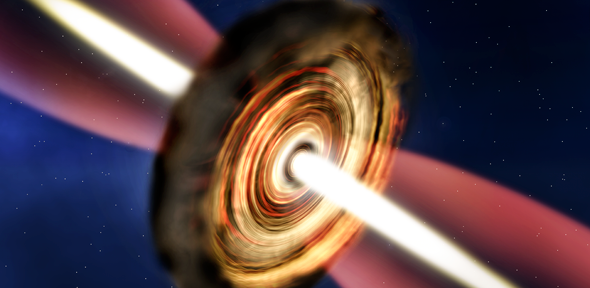Distant Young Star May Provide Answers To How Massive Stars Form

Massive stars lead a short and violent life. These stars, which have a mass of at least eight times greater than our sun, live fast and die young, making them a rarity among the estimated 100 billion stars in our galaxy.
A team of researchers from the University of Cambridge identified a young protostar in the Milky Way, located almost 11,000 light-years from Earth. They believe observing the star, which is already 30 times the mass of our sun, would finally help them understand how these massive objects form and evolve.
“An average star like our Sun is formed over a few million years, whereas massive stars are formed orders of magnitude faster — around 100,000 years,” John Ilee from Cambridge’s Institute of Astronomy, and the lead author of a study describing the findings, said in a statement released Sunday. “These massive stars also burn through their fuel much more quickly, so they have shorter overall lifespans, making them harder to catch when they are infants.”
The researchers discovered that the protostar, which resides in a cold and dense region of space known as an infrared dark cloud, formed from a rotating accretion disk of gas and dust — much like its less massive counterparts. They were also able to confirm that the disk was "Keplerian" — one that rotates faster at its centre than at the edge.
“This type of rotation is also seen in the Solar System — the inner planets rotate around the Sun more quickly than the outer planets,” Ilee said in the statement. “It's exciting to find such a disc around a massive young star, because it suggests that massive stars form in a similar way to lower mass stars, like our Sun.”
Observations made using the Submillimeter Array (SMA) in Hawaii and the Karl G. Jansky Very Large Array (VLA) in New Mexico suggest that the disk itself is so massive that it may eventually break up under its own gravity and form several small stars locked in orbit around their massive parent.
In order to further understand the mechanism of this star’s formation, the researchers will now observe the region using the extremely powerful Atacama Large Millimeter Array in Chile — an instrument that would allow the detection of potential companion stars.
© Copyright IBTimes 2025. All rights reserved.






















